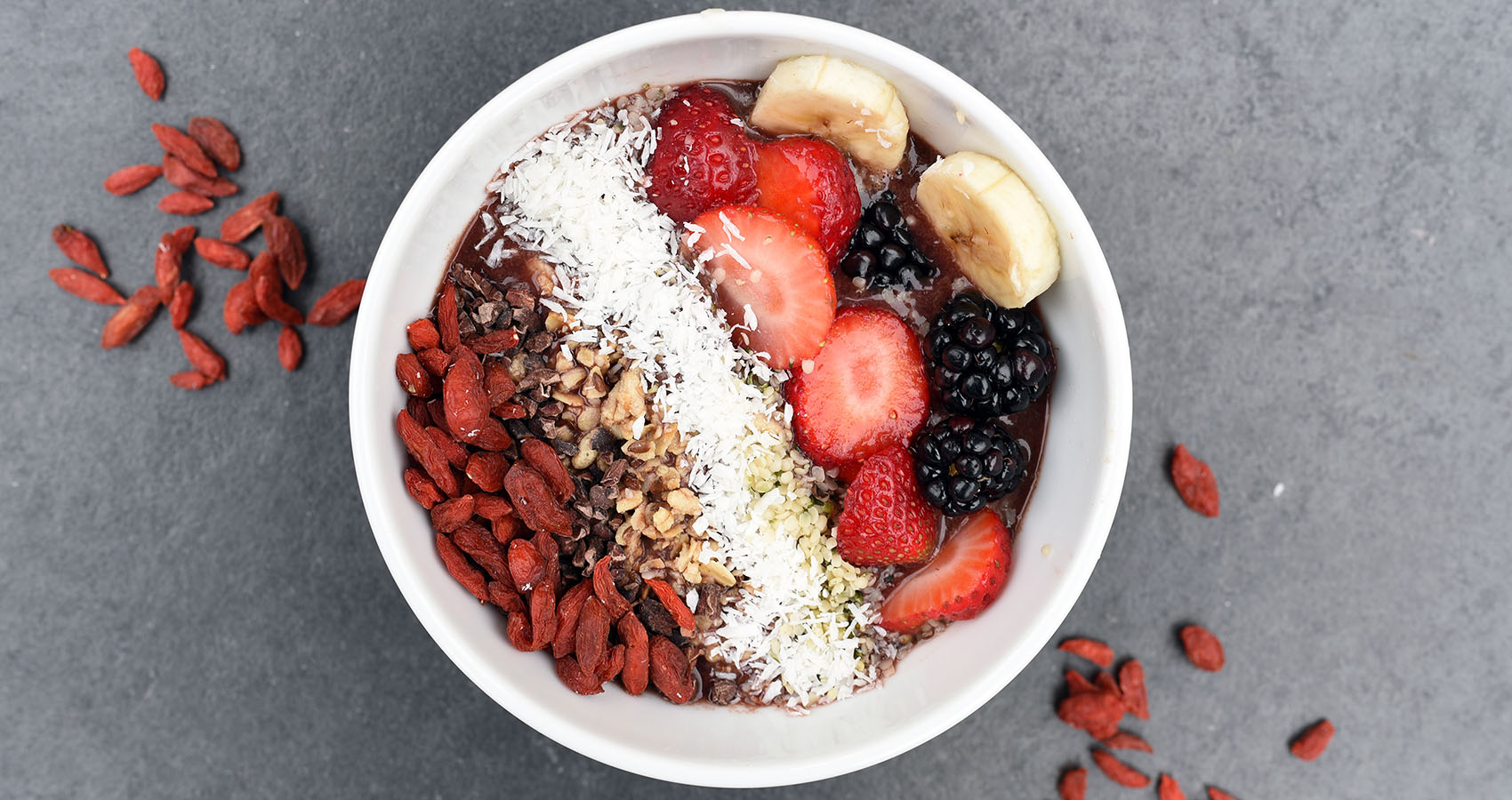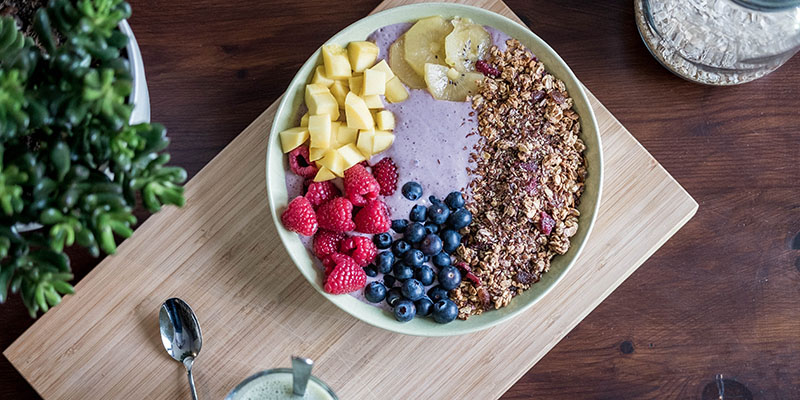We know that antioxidants are good for us. We know that fruits and veggies are full of them and that products will sometimes slap that word on their packaging to make us feel like we’re getting some bonus nutritional benefit. They fight free radicals and protect us from cancer.
But antioxidants come jumbled in a word salad: phytochemicals, phytonutrients, polyphenols, flavonols, anthocyanins, lycopene – it’s a regular biochemistry session out there on social media these days!
Here is the breakdown on how to understand antioxidants and where they fit into this terminology tumble.
Antioxidants + The Benefits of Them
In the broadest sense
Let’s start at the top. We eat plant foods. Plant foods are living. They are filled with tens of thousands of compounds that keep them alive and well.
Humans have evolved to depend on some of these plant compounds for our bodies to function optimally; those are vitamins and minerals. We group them together and call them micronutrients.
You May Also Like: Benefits of Chaga and How it Can Combat Stress
But vitamins and minerals represent only some of the compounds that help keep plants alive. The rest, which are “nonnutritive,” we refer to as phytochemicals or phytonutrients. Phytonutrients help plants resist insect attacks and bacterial spread, develop protection from UV rays, and produce compounds that discourage them from being eaten by wildlife so they can continue to grow.
We humans haven’t come to fully depend on these phytonutrients for our survival, but the more we study them the more we see correlations between eating phytonutrients and having reduced risks of disease. It turns out that, while they aren’t exactly vitamins or minerals, phytonutrients are still biologically active in our bodies and providing some benefits.
Classes of phytonutrients
We have started to break down phytonutrients into different types. One you may have heard of is plant sterols or phytosterols. Plant sterols are a type of phytonutrient that has been found to reduce LDL cholesterol. Sterols are found in high amounts in vegetable oils but can also be found in fruits and vegetables (likely if you’re getting a balanced diet and have no health conditions, you don’t need to be supplementing with plant sterols).
Other classes of phytonutrients may also sound familiar: flavonoids, carotenoids, and polyphenols. These are the major classes of phytonutrients being studied right now for their antioxidant properties.
Real quick: what are antioxidants doing, again?
Antioxidants are phytonutrients that protect us against the negative effects of a very normal, frequent biological process called oxidation.
Breathing, digesting, exercise, stress, our immune system, and other processes all create oxidized molecules. We also call them free radicals. Free radicals are unstable, and if left in that state can interact with other cells and cause damage. Our body has normal processes that neutralize those molecules, so they become stable again.
We have factors in our environment that can increase the amount of free radicals made in our bodies: smoking, alcohol, pollution, fried foods, high UV rays from sunlight, pesticides, and others. Lots of free radicals left around to interact with our cells, over the long-term, can result in oxidative stress. Oxidative stress is being researched as a factor in many chronic diseases.
In order to help the body neutralize free radicals at a pace faster than they develop, getting our recommended daily goals of at least 5 servings of fruits and vegetables a day provides us with antioxidants that will help get the job done. Antioxidants neutralize free radicals, helping our normal body processes keep up with how fast free radicals develop.
We continue to see that getting more plant foods may be correlated with reduced risk of chronic diseases later on. One reason could be that they help lower oxidative stress by eliminating free radicals.
So what are the different classes of antioxidants?
Antioxidants are mainly differentiated by their chemical structure, which is slightly more than we need to know, for our purposes. Here is a simple categorization of some of the major antioxidants and what foods they are typically found in.
Class: Polyphenols, the largest class of phytonutrients
Specific Antioxidants: resveratrol, grape seed extract, green tea extract, curcumin, olive fruit extract
Foods Found in: Peanuts, berries, grapes, red wine, turmeric, green tea, olives, olive oil
Class: Flavonoids, a sub-class of polyphenols
Specific Antioxidants: Quercitin, catechins, tangeritin, anthocyanins, isoflavones
Foods Found in: Onions, kale, pears, apples, citrus, cherries, plums, legumes, soybeans, nuts, tofu
Class: Carotenoids
Specific Antioxidants: beta-carotene, lutein, lycopene, zeaxanthin
Foods Found in: Tomato, pumpkin, squash, carrot, watermelon, papaya, guava
Class: Glucosinolates and Isothiocyanates
Specific Antioxidants: glucobrassicin, gluconapin, allylisothiocyanates, indoles
Foods Found in: cruciferous veggies: broccoli, cabbage, watercress, Brussels sprouts, mustard
Class: Organosulfides
Specific Antioxidants: diallyl sulfide, allyl methyl sulfide, S-allylcysteine
Foods Found in: Garlic, onions, leeks, cruciferous veggies
Class: Terpenes
Specific Antioxidants: Limonene, carvone
Foods Found in: Citrus fruits, cherries
Class: Lignans
Specific Antioxidants: secoisolariciresinol, mataresinol
Foods Found in: Berries, flax seed, flax oils, nuts,rye bran
What exactly should I be taking away from all of those mega-names?
Remembering the names of all of these phytonutrients, or trying to organize your diet to make sure you get every single one, is not necessary. The real takeaway is in the foods we find them: we get a better variety of antioxidants when we eat a greater variety of plant foods.
I counsel all of my nutrition clients to aim for variety in every food group, and this is partly why. Attention to a balanced, varied diet will give you the most antioxidant benefit with the least amount of stress and planning.
So go for it – change up your grocery list to include new fruits, veggies, oils, and whole grains on a weekly basis!








